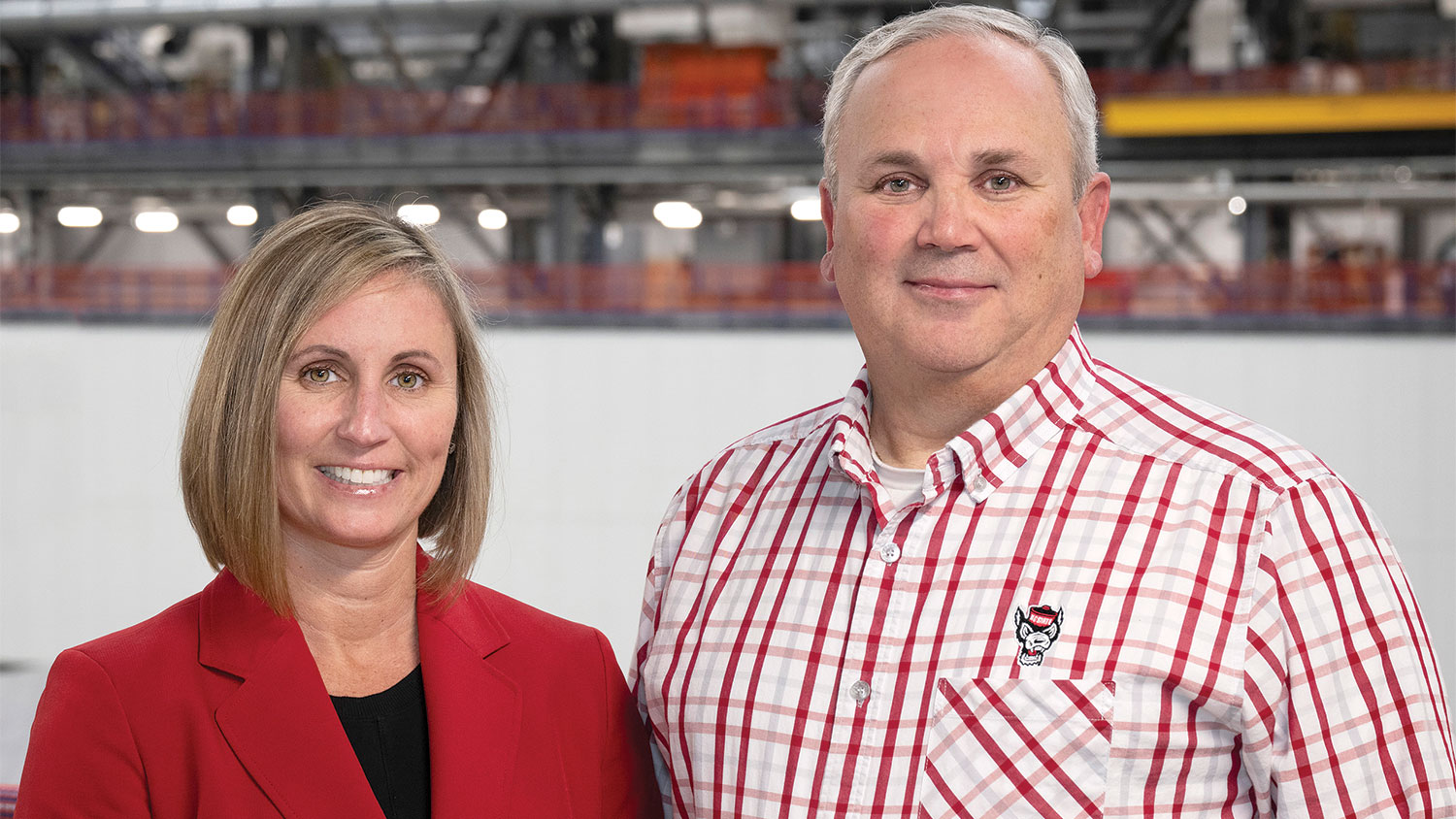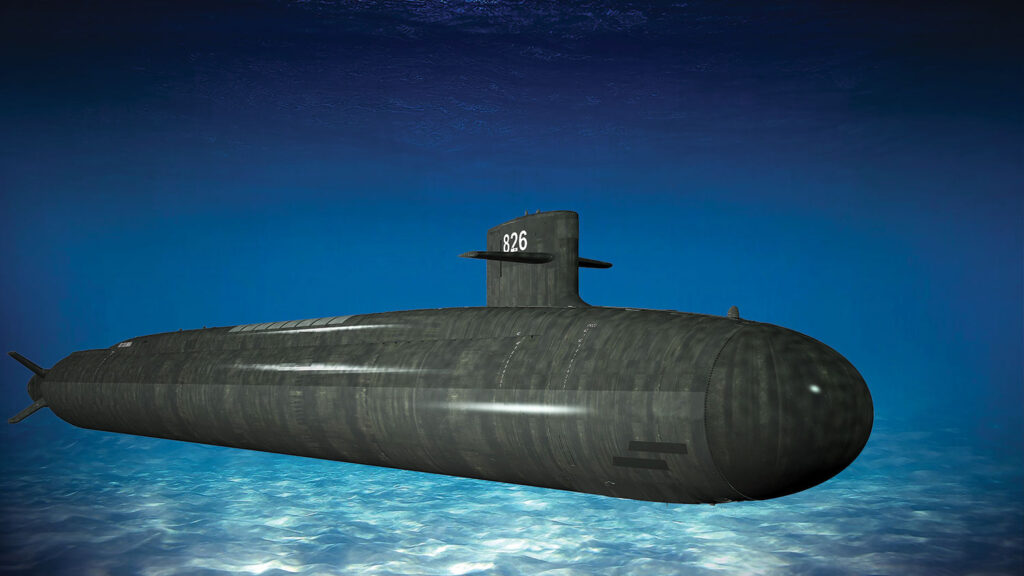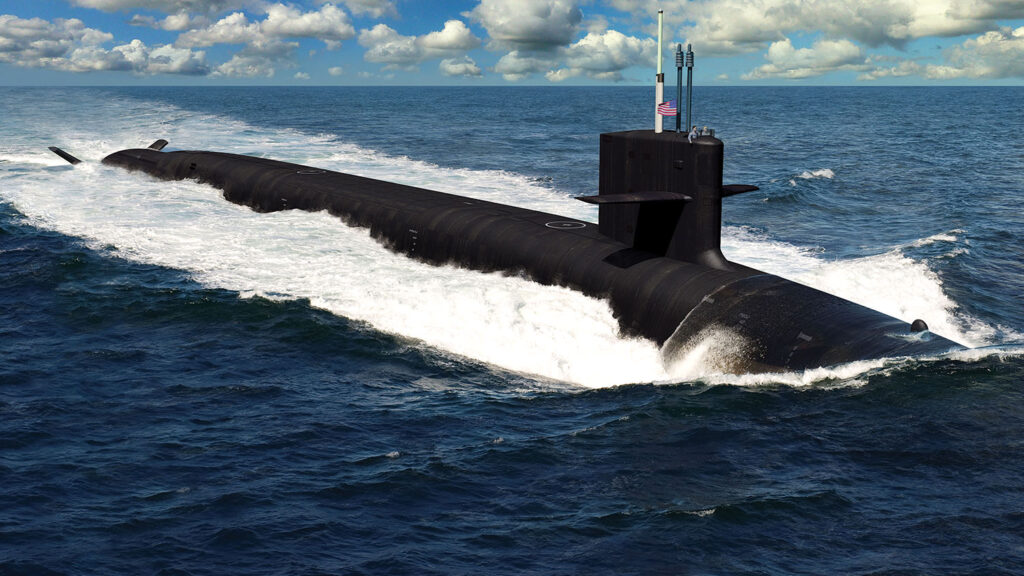Two Hands on Deck
A pair of alums is leading efforts to build a new class of nuclear-powered submarines for the U.S. Navy.

By David Menconi
Submarines have never been simple machines. But even by that standard, the nuclear-powered ballistic-missile submarine being built at General Dynamics Electric Boat’s Groton, Conn., shipyard is something else.
The future USS District of Columbia is the first of a dozen new Columbia-class submarines in a $132 billion project involving multiple shipyards and thousands of workers. Former engineering majors Eric Snider ’86 and Brandi Smith ’02 head up the development and construction team for the project. They’re part of what Snider says is one of the most complicated devices in human history.
“A submarine is a steel tank with 140 souls aboard that we want to come home,” says Snider, vice president, Columbia program, General Dynamics Electric Boat. “They take it to sea, submerge, surface, do all that. It’s jammed with high-pressure fluids and electricity, and it has to make air to breathe. That’s not even considering that it’s powered by a nuclear reactor. It all makes for a very complicated machine.”
“A submarine is a steel tank with 140 souls aboard that we want to come home.”
— Eric Snider ’86
Snider’s work with nuclear reactors goes back to his days as a nuclear engineering major, when he worked at NC State’s PULSTAR reactor facility. That led to a hitch in the U.S. Navy, which eventually brought him into contact with Smith — a civil servant who has been in the shipbuilding business at Newport News for her entire career.
“I had a lot of options coming out of school with a mechanical [engineering] background,” says Smith, vice president at Newport News Shipbuilding. “But taking the windshield tour during the interview … got me immediately thinking this was how I could serve my country in a different role.”


Building the first Columbia-class submarine is taking more than seven years. It’s a modular construction, with a half-dozen modules built at different facilities and shipped to General Dynamics Electric Boat for final assembly. Completion is scheduled for 2027, with deployment four years later. The Columbia submarines will replace the U.S. fleet’s aging Ohio-class submarines, which have been in service since 1981.
Columbia submarines will have fewer missile tubes than those in the Ohio-class (16 rather than 24), but they can still cover the same mission thanks to technological advances. Columbia submarines are significantly larger than Ohio-class, weighing in at more than 20,000 tons, with a 43-foot diameter and a length of 560 feet. “It’s also the first class of ship designed to have females integrated into the crew,” says Smith. “That’s kind of a big thing.” Design modifications primarily put instruments within reach for individuals of different sizes.
The major advantages of the Columbia class submarines will be greater stealth and a reactor that should not need refueling or servicing over its 40-year lifespan. The only limit for how long Columbia submarines can be at sea is how much food they can carry for the crew.
“It’s very challenging, but worthwhile because of the mission,” says Snider. “Submarines aren’t called ‘the silent service’ for nothing. There’s an important mission they carry out on behalf of the nation.”


